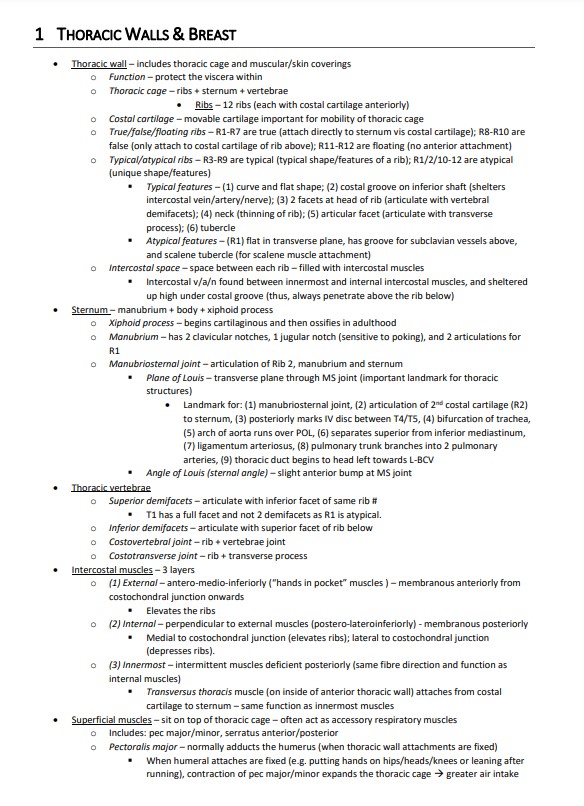ANAT30008 Viscera and Visceral Systems – COMPREHENSIVE (Grade 94)
Summary:
This is a comprehensive note that focuses on the viscera and visceral systems of the body. The viscera are the internal organs, and the visceral systems are the physiological systems that support their function. The course covers topics such as the anatomy and physiology of the cardiovascular, respiratory, digestive, and urinary systems. Understanding these systems is essential for understanding how the body functions as a whole. This note provides a comprehensive overview of the viscera and visceral systems and their underlying mechanisms, with a focus on research and practical applications. Overall, this is a valuable course for anyone interested in understanding the structure and function of the internal organs and physiological systems that support them.
Excerpt:
1 THORACIC WALLS & BREAST
- Thoracic wall – includes thoracic cage and muscular/skin coverings
- Function – protect the viscera within
- Thoracic cage – ribs + sternum + vertebrae
• Ribs – 12 ribs (each with costal cartilage anteriorly) - Costal cartilage – movable cartilage important for the mobility of the thoracic cage
- True/false/floating ribs – R1-R7 are true (attach directly to sternum vis costal cartilage); R8-R10 are false (only attach to the costal cartilage of rib above); R11-R12 are floating (no anterior attachment)
- Typical/atypical ribs – R3-R9 are typical (typical shape/features of a rib); R1/2/10-12 are atypical (unique shape/features)
▪ Typical features – (1) curve and flat shape; (2) costal groove on inferior shaft (shelters
intercostal vein/artery/nerve); (3) 2 facets at the head of the rib (articulate with vertebral
demi facets); (4) neck (thinning of rib); (5) articular facet (articulate with transverse
process); (6) tubercle
▪ Atypical features – (R1) flat in the transverse plane, has a groove for subclavian vessels above, and scalene tubercle (for scalene muscle attachment) - Intercostal space – space between each rib – filled with intercostal muscles
▪ Intercostal v/a/n found between innermost and internal intercostal muscles, and sheltered up high under the costal groove (thus, always penetrating above the rib below)
- Sternum – manubrium + body + xiphoid process
- Xiphoid process – begins cartilaginous and then ossifies in adulthood
- Manubrium – has 2 clavicular notches, 1 jugular notch (sensitive to poking), and 2 articulations for R1
- Manubriosternal joint – articulation of Rib 2, manubrium, and sternum


Reviews